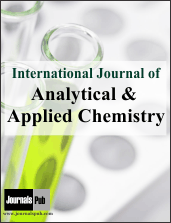Open Access

Pakeeja Bano,

Shubhangi,

Sandhya,
- Students Ashoka Institute of Technology & Management Varanasi Uttar Pradesh India
- Students Ashoka Institute of Technology & Management Varanasi Uttar Pradesh India
- Students Ashoka Institute of Technology & Management Varanasi Uttar Pradesh India
Abstract
To summaries, we believe that honey is an intriguing and promising alternative to traditional antibiotics and that it should be taken more seriously as a therapeutic agent. Honey is widely regarded as the world’s oldest medicine, and for good reason. Since time immemorial, it is believed to heal wounds along with antibiotic. The immunomodulatory present in it is also known to give proper wound healing. The antibiotic in many honeys is due to the origin of enzymes of hydrogen peroxidase. But there is a different honey as well, what we also call non-peroxidase honey, its formation may be related to low pH and high sugar content, which can help stop our germs. There are also some medical grade honeys which is harmful for humans, because it has an in vitro bactericidal process. Due to which many problems can come in our health which is very harmful. Along with this, there are some such natural honey which prove to be right for humans, which does not cause any harmful effect to humans. Because it causes spatial and temporal variation in the sources of nectar.
Keywords: Honey, Escherichia coli, ANTI-STAPHYLOCOCCAL, Bee species, polyphenolic compound
References
1. Kwakman PH, te Velde AA, de Boer L, Speijer D, Vandenbroucke-Grauls CM, Zaat SA. How honey kills bacteria. FASEB J. 2010; 24 (7): 2576–82. doi:10.1096/fj.09-150789 228 Honey Analysis
2. Lee H, Churey JJ, Worobo RW. Antimicrobial activity of bacterial isolates from different floral sources of honey. Int J Food Microbiol. 2008; 126 (1–2): 240–4. doi:10.1016/j.ijfoodmicro. 2008.04.030
3. Eteraf-Oskouei T, Najafi M. Traditional and modern uses of natural honey in human diseases: a review. Iran J Basic Med Sci. 2013; 16 (6): 731–42.
4. Mandal MD, Mandal S. Honey: its medicinal property and antibacterial activity. Asian Pac J Trop Biomed. 2011; 1: 154–60.
5. Israili ZH. Antimicrobial properties of honey. Am J Ther. 2014; 21:304–23.
6. Kwakman PH, Te Velde AA, de Boer L, Vandenbroucke-Grauls CM, Zaat SA. Two major medicinal honeys have different mechanisms of bactericidal activity. PLoS One. 2011; 4; 6 (3): e17709. doi: 10.1371/journal.pone.0017709
7. Kwakman PH, Zaat SA. Antibacterial components of honey. IUBMB Life. 2012; 64 (1): 48–55. doi:10.1002/iub.578.Epub2011Nov17
8. Mavric E, Wittmann S, Barth G, Henle T. Identification and quantification of methylglyoxal as the dominant antibacterial constituent of Manuka (Leptospermum scoparium) honeys from New Zealand. Mol Nutr Food Res. 2008; 52 (4): 483–9. doi:10.1002/mnfr.200700282
9. Kuś PM, Szweda P, Jerković I, Tuberoso CI. Activity of Polish unifloral honeys against pathogenic bacteria and its correlation with colour, phenolic content, antioxidant capacity and other parameters. Lett Appl Microbiol. 2016; 62 (3): 269–76. doi:10.1111/lam.12541
10. Anthimidou E, Mossialos D. Antibacterial activity of Greek and Cypriot honeys against Staphylococcus aureus and Pseudomonas aeruginosa in comparison to manuka honey. J Med Food. 2013; 16 (1):42–7. doi:10.1089/jmf.2012.0042

International Journal of Analytical and Applied Chemistry
| Volume | |
| Received | March 2, 2022 |
| Accepted | February 15, 2022 |
| Published | January 24, 2023 |

